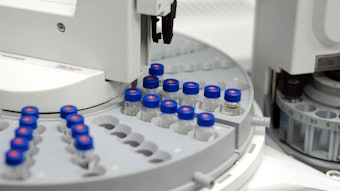Tattoos have been used throughout history as body decorations and they comprise an integral element of various cultures. However, many individuals are uncomfortable with the fact that tattooing is virtually irreversible since dyes are injected under the skin into the dermis. An alternative that has grown in popularity is temporary tattoos based on henna. This treatment is normally safe and does not injure the skin surface; it involves exposing the skin externally to a henna tattoo mixture that contains ground henna leaves mixed with water or oil.
The natural dye in henna leaves is 2-hydroxy-1,4-naphtoquinone (Lawsone), which reacts on the skin surface with skin proteins, leading to a temporary orange-brown coloring of the skin. Natural henna tattoo mixture—i.e., without para-phenylenediamine (PPD), is applied using semi-conical containers to make it easier to achieve elaborate designs and is left on the skin for three to six hours. The longer the exposure time, the darker the final color, which is never black as is often assumed, but a dark orange-brown. By adding PPD to the henna tattoo mixture, the application time can be significantly reduced and the results appear more like the desired black color. However, the autoxidation products of PPD including Bandrowski’s base, a trimer of PPD, are very strong potential skin sensitizers, thus the addition of PPD is responsible for most reported skin complications arising from the use of black henna, such as allergic contact dermatitis, post-inflammatory hyperpigmentation, or even worse, an allergic sensitization to PPD and the many substances that cross-react with it, including para-aminophenol, para-toluenediamine or many azoic dyes, such as disperse orange 3.










